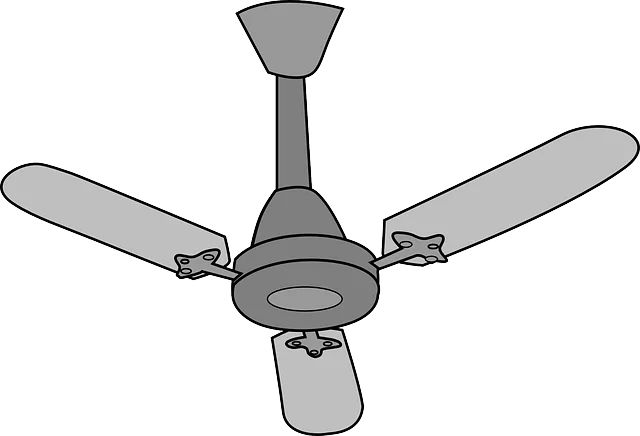Industrial ventilation systems are crucial for maintaining workplace air quality and ensuring worker safety by controlling pollutants. Compliance with ventilation safety standards, as outlined by regulatory bodies like OSHA, is essential for design, installation, and maintenance, protecting employees from hazards. Advanced systems manage airborne contaminants, improve circulation, and enhance comfort, while regular inspections and upkeep prevent risks like toxic gas buildup. Today, smart sensors and data analytics in industrial ventilation systems revolutionize air quality management, optimizing performance, reducing respiratory issues, and setting benchmarks for health and excellence. Case studies demonstrate significant improvements in indoor environments, providing valuable insights for organizations seeking cutting-edge solutions tailored to specific industry challenges.
“In every industry, efficient industrial ventilation systems are a cornerstone of workplace safety and productivity. This comprehensive guide delves into the intricate world of industrial fan technology, exploring its multifaceted role in maintaining optimal air quality. From understanding complex ventilation systems to implementing stringent safety standards, we unravel best practices ensuring worker protection. Additionally, we highlight cutting-edge innovations transforming industrial processes, supported by real-world case studies, providing a holistic perspective on enhancing workplace environments through advanced ventilation solutions.”
- Understanding Industrial Ventilation Systems: A Foundation for Workplace Safety
- The Role of Air Quality Management in Industrial Settings
- Ventilation Safety Standards: Compliance and Best Practices
- Innovative Fan Technologies Enhancing Industrial Processes
- Case Studies: Successful Implementation of Industrial Ventilation Solutions
Understanding Industrial Ventilation Systems: A Foundation for Workplace Safety
Industrial ventilation systems play a pivotal role in ensuring workplace air quality management and maintaining optimal conditions for workers. These systems are designed to control, supply, and exhaust air within industrial environments, removing potentially harmful pollutants, dust, vapors, and gases. By implementing effective ventilation strategies, businesses can significantly reduce the risks associated with poor air quality, enhancing overall employee safety and health.
Workplace safety standards emphasize the importance of proper ventilation as a fundamental measure to protect workers from various hazards. Ventilation safety standards dictate the design, installation, and maintenance requirements for industrial ventilation systems, ensuring they function efficiently and safely. Compliance with these standards is not just a legal obligation but also a moral responsibility towards safeguarding the well-being of employees in industrial settings.
The Role of Air Quality Management in Industrial Settings
In industrial settings, managing air quality is paramount to ensuring a safe and productive workplace. Industrial ventilation systems play a crucial role in controlling airborne contaminants, maintaining optimal air circulation, and enhancing overall worker comfort. These systems are designed to remove hazardous fumes, dust, and other pollutants generated by machinery and processes, thereby reducing the risk of respiratory issues, allergies, and other health problems for employees.
Effective workplace air quality management involves adhering to strict ventilation safety standards set forth by regulatory bodies. By implementing proper industrial ventilation techniques, such as local exhaust ventilation and general ventilation, companies can create a healthy environment that boosts employee morale and productivity. Regular maintenance and inspections of these systems are essential to guarantee their continued efficiency in mitigating airborne risks, ensuring the well-being of workers, and promoting a positive and safe work atmosphere.
Ventilation Safety Standards: Compliance and Best Practices
Maintaining proper ventilation is crucial for ensuring workplace safety and adhering to ventilation safety standards. Industrial facilities must prioritize comprehensive air quality management through their industrial ventilation systems. This involves regularly inspecting and maintaining exhaust fans, intakes, and ductwork to prevent hazardous conditions like toxic gas buildup or inadequate air circulation. Compliance with relevant regulations, such as those set by OSHA (Occupational Safety and Health Administration), is essential. These standards dictate minimum requirements for airflow rates, placement of vents, and employee protection measures.
Best practices in ventilation safety include implementing regular maintenance schedules, using advanced monitoring systems to track air quality, and providing adequate training to employees on potential risks. Additionally, integrating smart fan technologies that offer precise control over airflow can enhance both safety and efficiency. By staying up-to-date with industry best practices and regulatory requirements, industrial facilities can maintain a safe working environment while optimising operational performance.
Innovative Fan Technologies Enhancing Industrial Processes
In today’s competitive industrial landscape, innovative fan technologies are revolutionizing workplace air quality management. Advanced industrial ventilation systems equipped with smart sensors and data analytics can precisely control and monitor airflow, ensuring optimal conditions for worker safety and productivity. These cutting-edge solutions not only enhance overall ventilation efficiency but also adhere to stringent ventilation safety standards, minimizing the risk of hazardous airborne contaminants.
By leveraging these new technologies, industries can achieve more efficient process flows, improved employee comfort, and reduced instances of respiratory issues. Innovative fan designs incorporate features like variable speed drives and smart control algorithms that adapt airflow based on real-time conditions. This proactive approach to workplace air quality management is a game-changer in industrial settings, setting new benchmarks for health, safety, and operational excellence.
Case Studies: Successful Implementation of Industrial Ventilation Solutions
Successful case studies demonstrate the profound impact of advanced industrial ventilation systems on workplace air quality management. By implementing tailored solutions, companies have significantly improved indoor environments, fostering a safer and more productive atmosphere for employees. For instance, a study in a manufacturing facility revealed that upgrading to modern ventilation equipment reduced harmful pollutant levels by over 80%, marking a substantial improvement in worker health and comfort.
These implementations adhere to stringent ventilation safety standards, ensuring optimal air circulation while mitigating risks associated with poor air quality. The integration of cutting-edge technology has enabled efficient control of temperature, humidity, and contaminant levels, addressing various industry-specific challenges. As such, best practices set by these case studies offer valuable insights for other organizations aiming to enhance their workplace environments through effective industrial ventilation systems.


